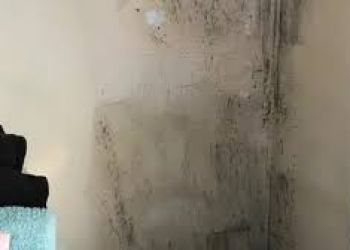How does a surveyor test for damp on a building survey?
Well this needs to be broken down into a number of factors to ensure fairness. For instance, the RICS has three levels of survey, 1, 2 and 3. These different types differ in terms of detail and therefore allowed time spent on site.
So the type of equipment will be used on a RICS Level 2 Homebuyer Report may be less than that used for a RICS Level 3 Building Survey.
The average surveyor is renowned for using a digital moisture meter, and the most common type is a protimeter. But does this test for moisture? Kind of and not is the answer. If you read the protimeter website it states that their products are designed to test resistance in timber! Resistance! Not Actual Moisture Content of the material. So why do surveyors rely solely on this product, often proudly including pictures of them detecting rising damp with this gadget in all manner of materials all over and outside the property?
To take a trip back in time, when I was being trained in a small practice in Leatherhead my supervising Chartered Surveyor would often send me around the property with his trusted damp meter looking for rising damp. One day, and after a full morning of rain he was testing the external walls and said, oh yes rising damp is elevated in these areas. This was the first time I thought that there may be a problem with understanding moisture in buildings and also that it may be time to look for a new job.
Yes it is true that damp, particularly in older buildings is rarely understood and is often misunderstood.
In general, there are three types of damp which are condensation, penetrating damp and rising damp.
Condensation is the conversion of a vapour or gas to a liquid.
Penetrating damp is simply the lateral transfer of moisture through a material.
Rising damp is the contentious one and is a RICS surveyors best loved argument. Will put our neck out and say that true rising damp does not exist. Moisture however under pressure can travel vertically through porous materials. But there is always a cause and the answer is never to chemically inject or damp proof. Simply find the issue and deal with it. Simple.
So what do our surveyors carry on a Building or Damp Survey?
Our no1 tool is Thermohydrometer. The hygrometer measures temperature and humidity, plus calculates dew point, wet bulb, mixing ratio, absolute humidity, enthalpy, and water vapor pressure.
Next we use thermal imaging cameras. Thermal imaging cameras are devices that translate thermal energy (heat) into visible light in order to analyze a particular object or scene. The image produced is known as a thermogram and is analyzed through a process called thermography. This helps us locate cold bridging, damp and moisture ingress.
Carbide testing kit. A speedy calcium carbide damp test is a method used for diagnosing damp by damp specialists to determine the moisture content within damp walls in houses.
Visual inspection. The most useful and hard to teach tool is the most obvious. Have a look and make a diagnosis of the issue.
High level cameras to allow us to investigate gutters and roof level.
All in all our surveyors use a variety of tools and skills to investigate damp in properties. But the most useful is by far our knowledge and experience in understanding how damp affects properties and the ways in which it penetrates and manifests.
If you need to contact us for an informal chat then please do not hesitate to call us on 07568 513972.
David
